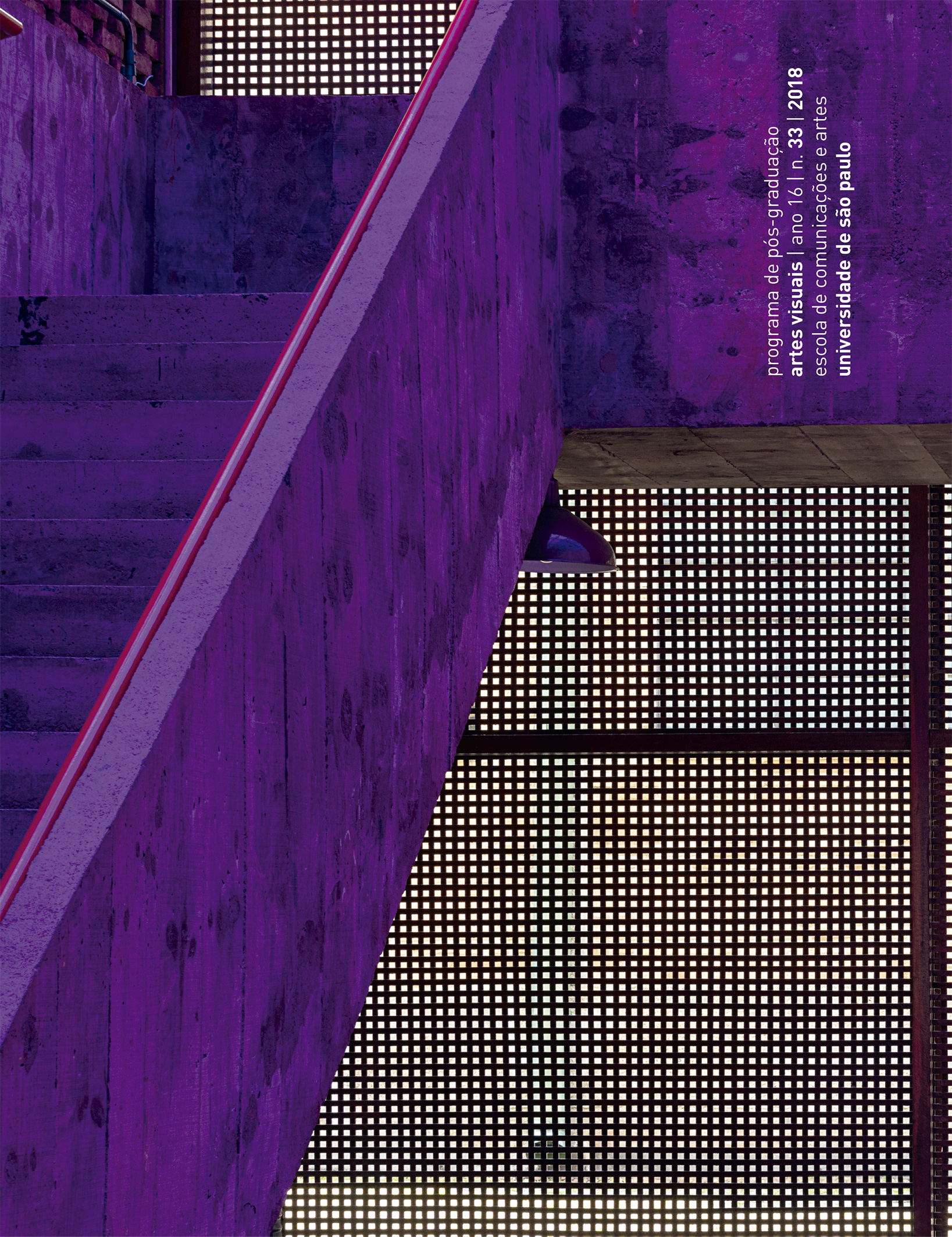Diante da catástrofe. Imagem em movimento, imagem-apagamento e cemitério marinho
DOI:
https://doi.org/10.11606/issn.2178-0447.ars.2018.137973Palavras-chave:
Imagem em movimento, catástrofe, memória, ditaduraResumo
Este artigo pretende pensar a indissociabilidade entre representação da catástrofe e catástrofe da representação. Para tanto, serão observadas tentativas de figurar diferentes eventos catastróficos por meio da imagem em movimento, ao longo da história. Na vídeo-instalação Los durmientes (2014), realizada pelo artista chileno Enrique Ramirez e exposta em 2015 no Museo de la Memoria y los Derechos Humanos de Santiago, a água que preenche todo o quadro tem qualidade sólida e opaca, funcionando como obstáculo à visão do espectador, o que reitera a “invisibilidade constitutiva” das tentativas de representação da catástrofe. Enquanto afirmação da inacessibilidade da verdade sobre os presos torturados, assassinados e desaparecidos sob a ditadura militar chilena, pode esta imagem em movimento ser entendida como imagem-apagamento?
Downloads
Downloads
Publicado
Edição
Seção
Licença
É responsabilidade dos autores a obtenção da permissão por escrito para usar em seus artigos materiais protegidos por lei de Direitos Autorais. A revista Ars não é responsável por quebras de Direitos Autorais feitas por seus colaboradores.
Os autores mantêm os direitos autorais e concedem à revista o direito de primeira publicação, com o trabalho licenciado sob Licença Creative Commons do tipo CC-BY.
Os licenciados têm o direito de copiar, distribuir, exibir e executar a obra e fazer trabalhos derivados dela, inclusive para fins comerciais, conquanto deem os devidos créditos ao autor ou licenciador, na maneira especificada por estes.
O licenciado se compromete a oferecer os créditos apropriados, o link para acesso à licença e a informar caso qualquer alteração no material original tenha sido feita.
Conquanto respeitados os termos da licença, não é permitida ao licenciador/autor a revogação dessas condições.
Após a publicação dos artigos, os autores permanecem com os direitos autorais e de republicação do texto, sendo permitida sua publicação posterior exclusivamente em livros inéditos e coletâneas.


